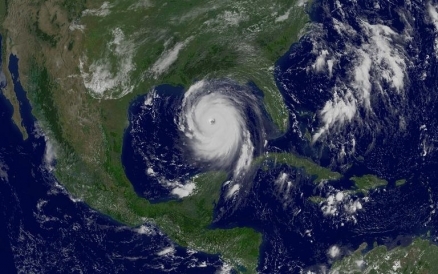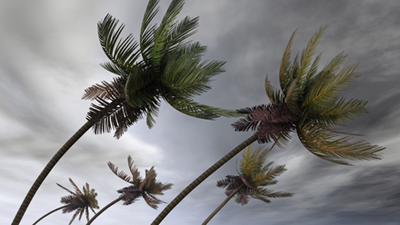Hurricanes and the Gulf of Mexico oil spill
Most hurricanesspan an enormous area of the ocean(200-300 miles) — far wider than the current size of the spill. If the slick remains small in comparison to a typical hurricane’s general environment and size, the anticipated impact on the hurricanewould be minimal.
The oilis not expected to appreciably affect either the intensity or the track of a fully developed tropical storm or hurricane. The oil slick would have little effect on the storm surge or near-shore wave heights. Evaporationfrom the sea surface fuels tropical storms and hurricanes. Over relatively calm water (such as for a developing tropical depression or disturbance), in theory, an oil slick could suppress evaporationif the layer is thick enough, by not allowing contact of the water to the air. With less evaporationone might assume there would be less moisture available to fuel the hurricaneand thus reduce its strength.
However, except for immediately near the source, the slick is very patchy. At moderate windspeeds, such as those found in approaching tropical storms and hurricanes, a thin layer of oilsuch as is the case with the current slick (except in very limited areas near the well) would likely break into pools on the surface or mix as drops in the upper layers of the ocean. (The heaviest surface slicks, however, could re-coalesce at the surface after the storm passes.) This would allow much of the water to remain in touch with the overlying air and greatly reduce any effect the oil may have on evaporation. Therefore, the oil slick is not likely to have a significant impact on the hurricane.
All of the sampling to date shows that except near the leaking well, the subsurface dispersed oil is in parts per million levels or less. The hurricanewill mix the waters of the Gulf (Gulf of Mexico large marine ecosystem)and disperse the oil even further. The high [[wind]s]and seas associated with severe storms will mix and “weather” the oil, which can help accelerate the biodegradation process. The high [[wind]s]may distribute oil over a wider area, but it is difficult to model exactly where the oil may be transported. Movement of oil would depend greatly on the track of the hurricane.
Storms’ surges may carry oil into the coastlineand inland as far as the surge reaches. Debris resulting from the hurricanemay be contaminated by oil from the Deepwater Horizon incident, but also from other oil releases that may occur during the storm.
A [[hurricane]’s]winds rotate counter-clockwise. Thus, in VERY GENERAL TERMS:
- A hurricanepassing to the west of the oil slick could drive oil to the coast.
- A hurricanepassing to the east of the slick could drive the oil away from the coast.
However, the details of the evolution of the storm, the track, the wind speed, the size, the forward motion and the intensity are all unknowns at this point and may alter this general statement.
Concerns about hurricanesand oil spills have come up before, but our experience has been primarily with oil spills that occurred because of the storm, not from an existing oil slick and an ongoing release of oil from the seafloor. The experience from hurricanes Katrina and Rita (2005) was that oil released during the storms became very widely dispersed. Dozens of significant spills and hundreds of smaller spills occurred from offshore facilities, shoreside facilities, vessel sinkings, etc.


